Creating Strong Titanium/Titanium Hydride Brown Bodies at Ambient Pressure and Moderate Temperatures
Abstract
:1. Introduction
2. Materials and Methods
2.1. Sample Preparation
2.1.1. Mold
2.1.2. Experimental Conditions
2.1.3. Firing
2.2. Characterization and Analysis
3. Results
3.1. Visual Observations
3.2. X-Ray Diffraction Phase Analysis
3.3. Microstructural Analysis Using Scanning Electron Microscopy
3.4. Density vs. Applied Pressure Tests
4. Discussion
5. Conclusions
Author Contributions
Funding
Acknowledgments
Conflicts of Interest
References
- Alexandrov, D.V. On the theory of Ostwald ripening: Formation of the universal distribution. J. Phys. A 2014, 48, 035103. [Google Scholar] [CrossRef]
- Lifshitz, I.M.; Slyozov, V.V. The kinetics of precipitation from supersaturated solid solutions. J. Phys. Chem. Solids 1961, 19, 35–50. [Google Scholar] [CrossRef]
- Wei, T.C.; Phillips, J. Thermal and catalytic etching: Mechanisms of metal catalysts reconstruction. Adv. Catal. 1996, 41, 359–421. [Google Scholar]
- Wu, N.L.; Phillips, J. Sintering of silica-supported platinum catalysts during ethylene oxidation. J. Catal. 1988, 113, 129–143. [Google Scholar] [CrossRef]
- Phillips, J. System and Methods for Low Temperature Metal Printing. US Patent 10,648,058, 12 May 2020. [Google Scholar]
- Daniels, Z.; Phillips, J. Reduction Expansion Synthesis of Sintered Metal. US Patent 16/712, 18 June 2020. [Google Scholar]
- Zea, H.; Luhrs, C.C.; Phillips, J. Reductive/expansion synthesis of zero valent submicron and nanometal particles. J. Mater. Res. 2014, 26, 672. [Google Scholar] [CrossRef]
- Luhrs, C.C.; Kane, M.; Leseman, Z.; Phillips, J. Novel process for solid state reduction of metal oxides and hydroxides. Metall. Mater. Trans. B 2013, 44, 115. [Google Scholar] [CrossRef]
- Luhrs, C.C.; Leseman, Z.; Phillips, J.; Zea, H.R. Generation of Metal and Alloy Micron, Submicron or Nano Particles in Simple, Rapid Process. U.S. Patent 8,709,126, 29 April 2014. [Google Scholar]
- Luhrs, C.C.; Phillips, J. Reductive/Expansion Synthesis of Graphene. U.S. Patent 8,894,886, 25 November 2014. [Google Scholar]
- Lee, T.T.; Adams, R.A.; Luhrs, C.C.; Arora, A.; Pol, V.G.; Wu, C.H.; Phillips, J. High stability tin/carbon battery electrodes produced using reduction expansion synthesis. Carbon 2018, 132, 411. [Google Scholar] [CrossRef]
- Elbaz, L.; Phillips, J.; Artyushkova, K.; More, K.; Brosha, E.L. Evidence of high electrocatalytic activity of molybdenum carbide supported platinum nanorafts. J. Electrochem. Soc. 2015, 162, 681–685. [Google Scholar] [CrossRef] [Green Version]
- Plear, C.; Greenaway, K.; Zea, H.; Wu, C.H.; Luhrs, C.C.; Phillips, J. Novel chemical process for producing chrome coated metal. Materials 2018, 11, 78. [Google Scholar] [CrossRef] [Green Version]
- Phillips, J. Chemical Methods to Create Metal Films on Metal and Ceramic Substrates. US Patent 10,273,582, 30 April 2019. [Google Scholar]
- Daniels, Z.; Rydalch, W.; Ansell, T.; Luhrs, C.C.; Phillips, J. Reduction expansion synthesis of sintered metal. Materials 2019, 12, 2890. [Google Scholar] [CrossRef] [Green Version]
- Rydalch, W. Reduction Expansion Synthesis of Sintered Metal. Master’s Thesis, Naval Postgraduate School, Monterey, CA, USA, 2019. [Google Scholar]
- Lutjering, G.; Williams, J.C. Titanium; Springer: Berlin, Germany, 2007. [Google Scholar]
- Inagki, I.; Takechi, T.; Shirai, Y.; Ariyasu, N. Application and features of titanium for the aerospace industry. Nippon Steel Sumimoto Metal 2014, 106, 22–27. [Google Scholar]
- Boyer, R. Attributes, characteristics and applications of titanium and its alloys. J. Mater. 2010, 62, 21–24. [Google Scholar] [CrossRef]
- Ewart, P.D. The use of particulate injection molding for fabrication of sports and leisure equipment from titanium metals. Proceedings 2018, 2, 254. [Google Scholar] [CrossRef] [Green Version]
- German, R.M. Progress in titanium metal powder injection molding. Materials 2013, 6, 3641. [Google Scholar] [CrossRef] [PubMed]
- Wang, C.; Zhang, Y.; Xiao, S.; Chen, Y. Sintering densification of titanium hydride powders. Mater. Manuf. Process. 2017, 32, 517. [Google Scholar] [CrossRef]
- Hedayati, A. Fabrication and Properties of TiH2 and Ti Blends for Powder Metallurgy Ti Products. Master’s Thesis, The University of New South Wales, Wales, UK, 2012. [Google Scholar]
- Ileana, C.; Stefan, G.; Ilie, D.; Claudiu, N. Aspects about sintering behavior of a titanium hydride powder based alloy used for automotive components. Appl. Mech. Mat. 2016, 823, 467. [Google Scholar]
- Lee, D.W.; Lee, H.S.; Park, J.H.; Shin, S.M.; Wang, J.P. Sintering of titanium hydride powder compaction. Proc. Manuf. 2015, 2, 550. [Google Scholar] [CrossRef] [Green Version]
- Phillips, J.; Clausen, B.; Dumesic, J.A. Iron pentacarbonyl decomposition over grafoil production of small metallic iron particles. J. Phys. Chem. 1980, 84, 1814–1822. [Google Scholar] [CrossRef]
- Phillips, J.; Dumesic, J.A. Iron pentacarbonyl decomposition over grafoil: II. Effect of sample outgassing on decomposition kinetics. Appl. Surf. Sci. 1981, 7, 215–230. [Google Scholar] [CrossRef]
- Machaka, R.; Chickwanda, H.K. Analysis of the cold compaction behavior of titanium powders: A comprehensive inter-model comparison study of compaction equations. CrossMark 2015, 46, 4285–4297. [Google Scholar] [CrossRef]
- Machaka, R.; Chickwanda, H.K. An experimental evaluation of the gerdemann–jablonski compaction equation. Metall. Mater. Trans. A 2015, 46, 2194–2200. [Google Scholar] [CrossRef]
- Frykholm, R.; Brash, B. Press and sintering of titanium. Key Eng. Mater. 2016, 704, 369. [Google Scholar] [CrossRef]
- Esen, Z.; Tarhan Bor, E.; Bor, S. Characterization of loose powder sintered porous titanium and Ti6Al4V alloy. Turk. J. Eng. Environ. Sci. 2009, 33, 207–219. [Google Scholar]
- San-Martin, A.; Manchester, F.D. The H-Ti (hydrogen-titanium) system. Bull. Alloy Phase Diagr. 1987, 8, 30–42. [Google Scholar] [CrossRef]
- Denquin, A.; Naka, S. Phase transformation mechanisms involved in two-phase TiAl-based alloys–I. Lamellar structure formation. Pergamon 1996, 44, 343–352. [Google Scholar]
- Paneth, F.; Hofeditz, W. Über die Darstellung von freiem Methyl. Chem. Eur. 1929, 62, 1335. [Google Scholar] [CrossRef]
- Paneth, F.; Lautsch, W. Isolation of radical ethyl. Nature 1930, 125, 564. [Google Scholar] [CrossRef]
- Rice, F.O.; Glasebrook, A.L. The thermal decomposition of organic compounds from the standpoint of free radicals. XI. The methylene radical. J. Am. Chem. Soc. 1934, 56, 2381. [Google Scholar] [CrossRef]
- Pearson, T.G.; Purcell, R.H.; Saigh, G.H. Methylene. J. Chem. Soc. 1938, 82, 409. [Google Scholar] [CrossRef]
- Pearson, T.G.; Robinson, P.L.; Stoddart, E.M. The behavior of metals, particularly lead and bismuth, in atomic hydrogen, and attempts to prepare atomic hydrogen from hydrides. Proc. R. Soc. Lond. 1933, 142, 275–285. [Google Scholar]
- Hiraoka, H. Selective removal of metal atoms in hydrogen reactive ion-etching. J. Vac. Sci. Techol. 1986, 4, 345. [Google Scholar] [CrossRef]
- Chou, C.H.; Phillips, J. Tin foil reconstruction in hydrogen plasma. J. Vac. Sci. Technol. A 1990, 8, 3941. [Google Scholar] [CrossRef]
- Wu, N.L.; Phillips, J. Catalytic etching of platinum during ethylene oxidation. J. Phys. Chem. 1985, 89, 591–600. [Google Scholar] [CrossRef]
- Wu, N.L.; Phillips, J. Reaction-enhanced sintering of platinum thin films during ethylene oxidation. J. Appl. Phys. 1986, 59, 769. [Google Scholar] [CrossRef]
- Hess, J.M.; Phillips, J. Catalytic etching of Pt/Rh guazes. J. Catal. 1992, 136, 149. [Google Scholar] [CrossRef]
- Dean, V.W.; Frenklach, M.; Phillips, J. Catalytic etching of platinum foils and thin films in hydrogen-oxygen mixtures. J. Phys. Chem. 1988, 92, 5731–5738. [Google Scholar] [CrossRef]
- Kaess, U.; Majera, G.; Stolla, M.; Peterson, T.; Barnes, R. Hydrogen and deuterium diffusion in titanium dihydrides/dideuterides. J. Alloys Compd. 1997, 259, 74. [Google Scholar] [CrossRef]
- Weigle, J.C.; Phillips, J. Modeling hydrogen spillover in dual bed catalytic reactors. AIChE 2004, 50, 821. [Google Scholar] [CrossRef]
- Weigle, J.C.; Phillips, J. Novel dual bed reactors: Utilization of hydrogen spillover in reactor design. Langmuir 2004, 20, 1189–1193. [Google Scholar] [CrossRef]
- Change, H.; Heck, R.; Phillips, J. Catalytic synergism in physical mixtures. Langmuir 1996, 12, 2756. [Google Scholar] [CrossRef]
- Chang, H.; Phillips, J. Catalytic synergism in physical mixtures of supported iron-cerium and supported nobel metal for hydroisomerization of 1,3-butadiene. Langmuir 1977, 13, 477. [Google Scholar] [CrossRef]
- Menéndez, J.A.; Radovic, L.R.; Xia, B.; Phillips, J. Low-temperature generation of basic carbon surfaces by hydrogen spillover. J. Phys. Chem. 1996, 100, 17243–17248. [Google Scholar] [CrossRef]
- Fang, Z.Z.; Sun, P.; Wang, H. Hydrogen sintering of titanium to produce high density fine grain titanium alloys. Adv. Eng. Mater. 2012, 14, 383–384. [Google Scholar] [CrossRef]
- Beranoagirre, A.; Olvera, D.; López de Lacalle, L.N. Milling of gamma titanium–aluminum alloys. Int. J. Adv. Manuf. Technol. 2012, 62, 83–88. [Google Scholar] [CrossRef]
- Beranoagirre, A.; Urbikain, G.; Calleja, A.; Lopez de Lacalle, L.N. Drilling process in.-TiAl intermetallic alloys. Materials 2018, 11, 2379. [Google Scholar] [CrossRef] [Green Version]
- Banhout, J. Manufacture, characterization and applications of cellular metal and metal foams. Prog. Mater. Sci. 2001, 46, 559. [Google Scholar]
- Salimon, A.; Brechet, Y.; Ashby, M.E.; Greer, A.L. Potential applications for steel and titanium metal foam. J. Mater. Sci. 2005, 40, 5793. [Google Scholar] [CrossRef]
- Evans, A.G.; Hutchinson, J.W.; Ashby, M.F. Cellular metals. Sol. State Mater. Sci. 1998, 3, 288–303. [Google Scholar] [CrossRef]
- Tuchinsky, L.; Loutfy, R. Titanium Foams for Medical Applications. Materials & Processes for Medical Devices Conference, Anaheim, CA, USA, 10 September 2003; pp. 377–381. [Google Scholar]
- Zhao, C.Y.; Kim, T.; Lu, T.J.; Hodson, J.P. Thermal transport in high porosity cellular metal foams. J. Therm. Heat Trans. 2004, 18, 309–317. [Google Scholar] [CrossRef]
- Nazar, A.; Abate, K.M.; Kumar, A.; Jeng-Ywan, J. A state-of-the-art review of types, design, optimization and additive manufacturing of cellular structures. Int. J. Adv. Manuf. Technol. 2019, 104, 3489. [Google Scholar] [CrossRef]
- Kashef, S.; Asgari, A.; Hilditch, T.B.; Yan, W.; Goel, V.K.; Hodgson, P.D. Fatigue crack growth behavior of titanium foams for medical applications. Mater. Sci. Eng. A 2011, 528, 1602–1607. [Google Scholar] [CrossRef]
- Kashef, S.; Asgari, A.; Hilditch, T.B.; Yan, W.; Goel, V.K.; Hodgson, P.D. Fracture toughness of titanium foams for medical applications. Mater. Sci. Eng. A 2010, 527, 7689–7693. [Google Scholar] [CrossRef]
- Zhao, C.Y.; Tassou, S.A.; Lu, T.J. Analytical considerations of thermal radiation in cellular metal foams with open cells. Int. J. Heat Mass Trans. 2008, 51, 929–940. [Google Scholar] [CrossRef]
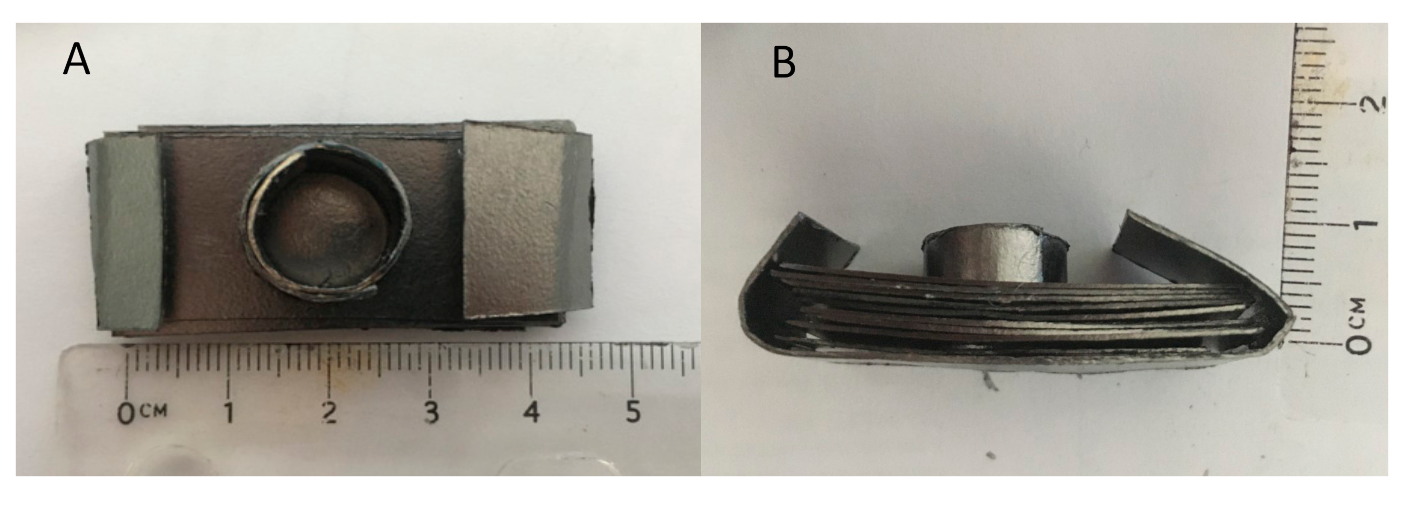
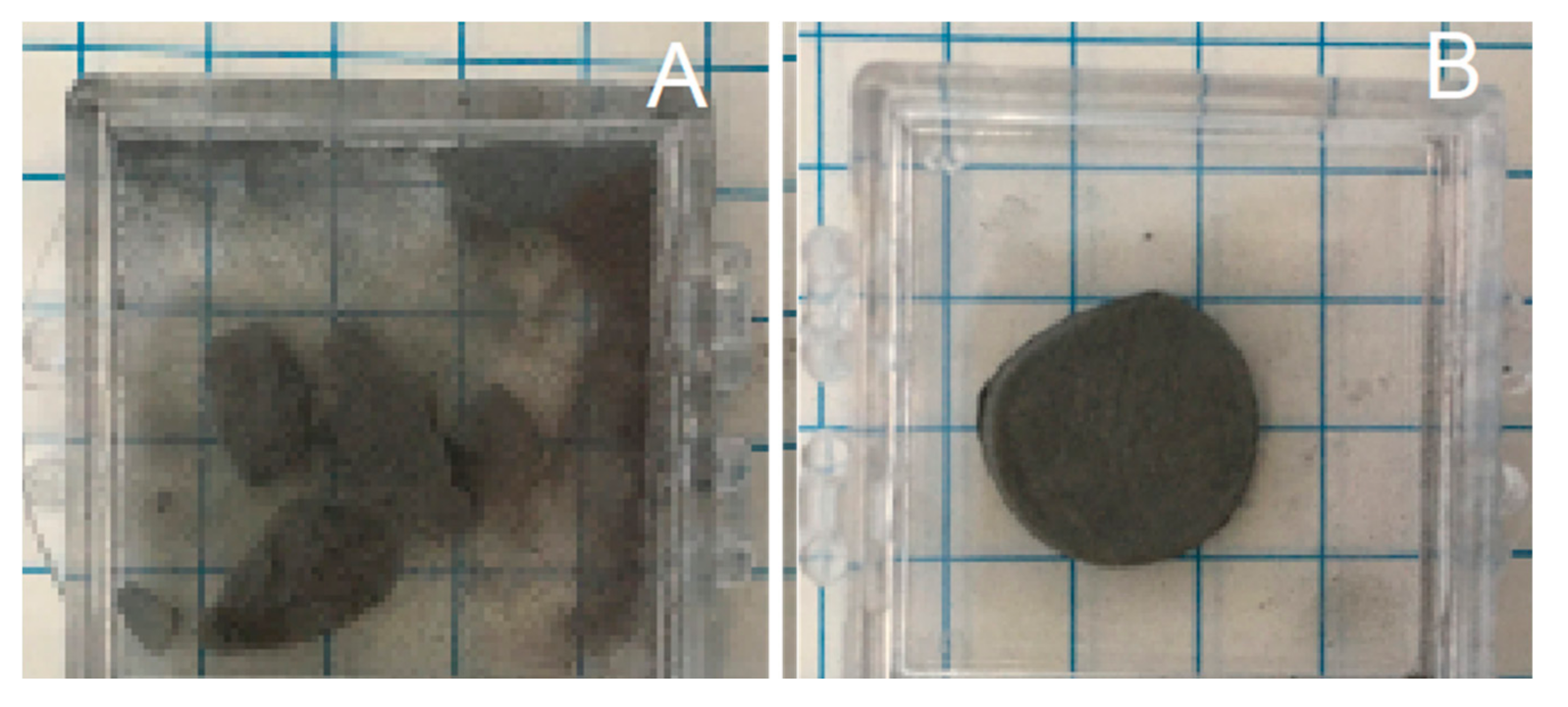

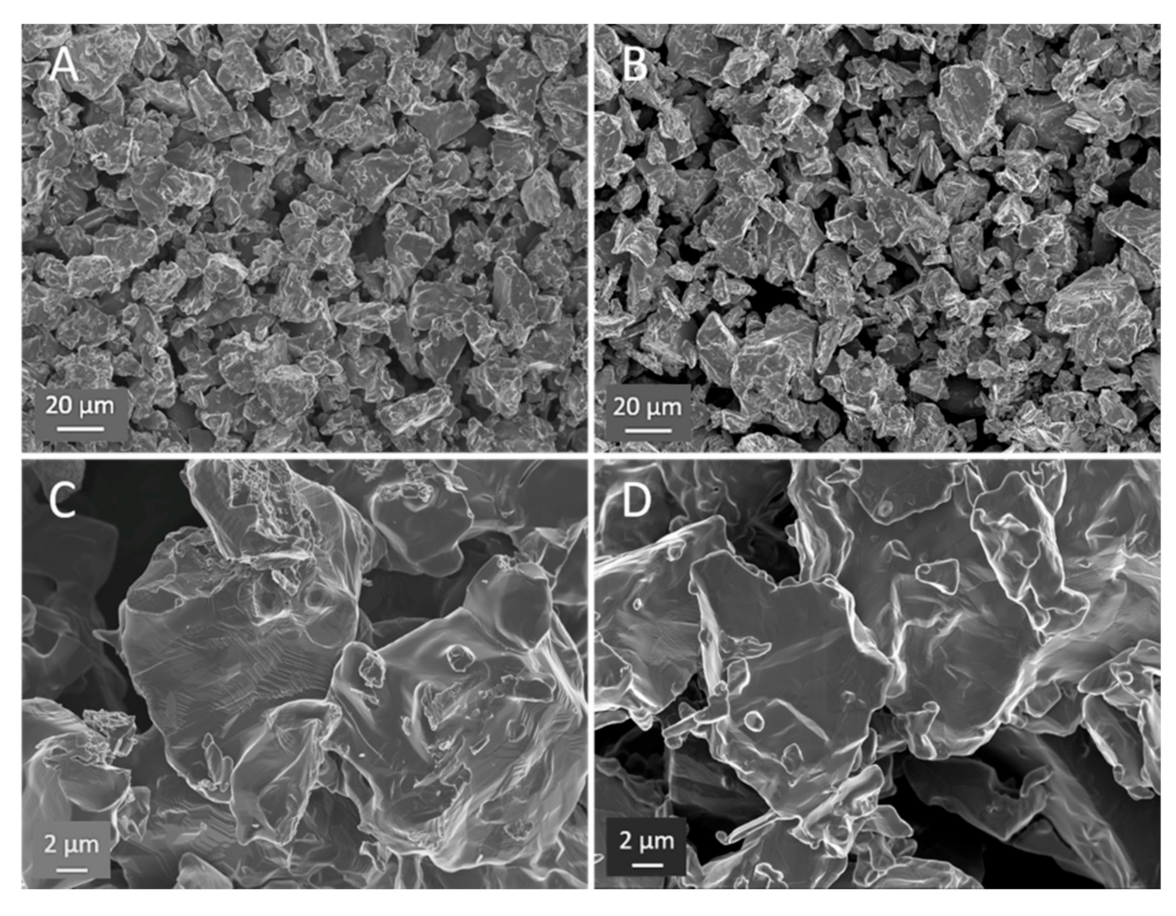

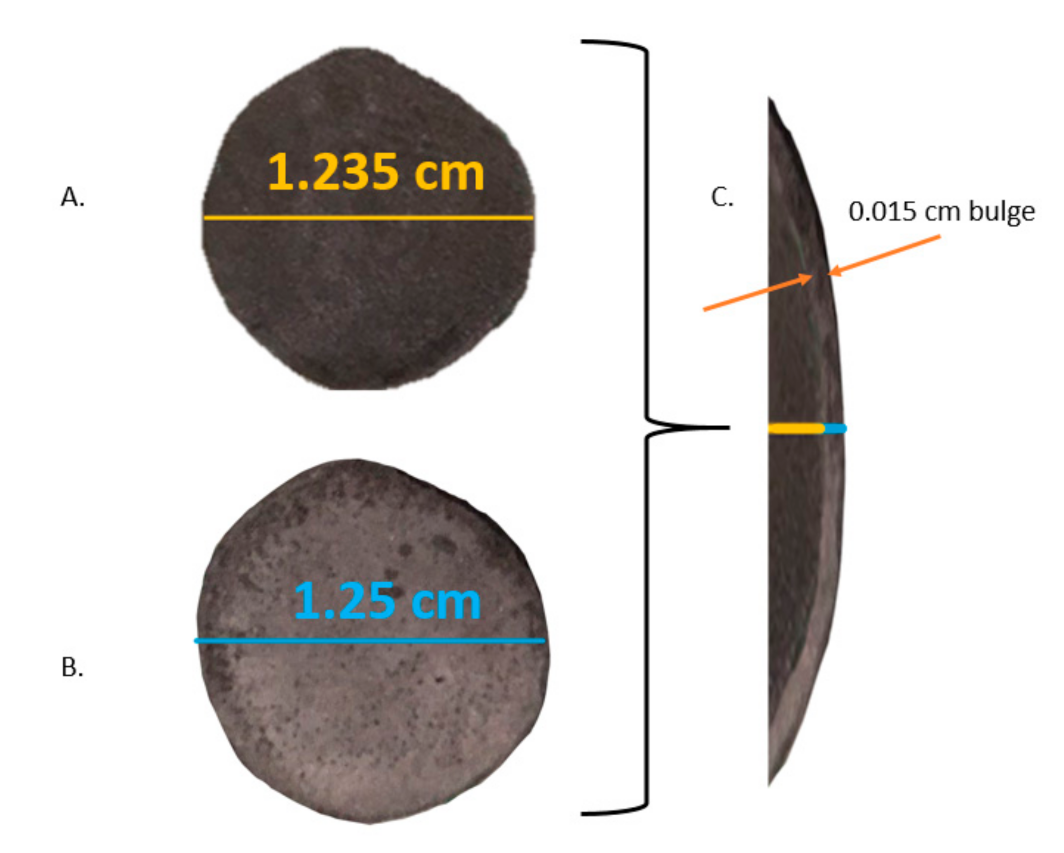

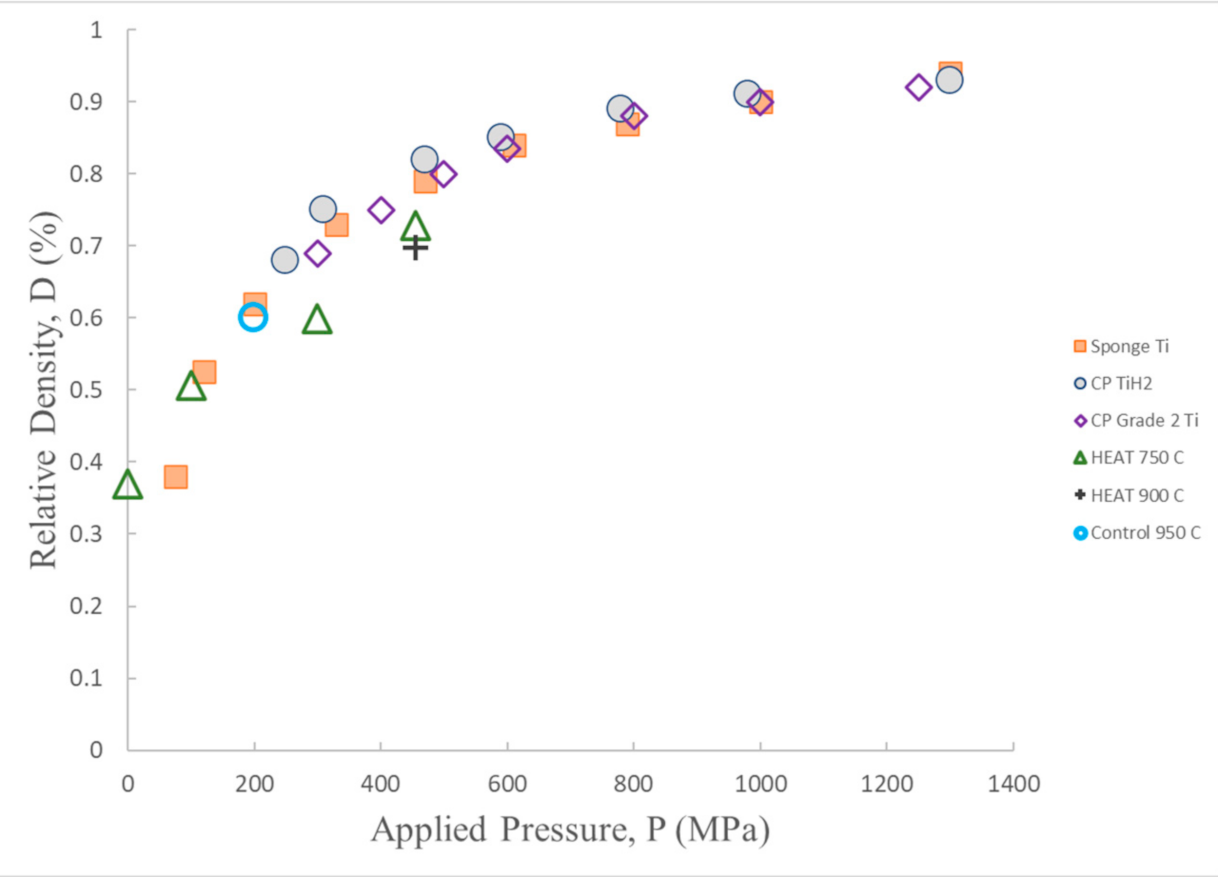
| Test | Firing Temp (°C) | Flow | Key Visual Observations—Raw | Key Visual Observations— Post-(5000 Atm) Compression Test |
|---|---|---|---|---|
| 1 | 650 | Ar/H2 | Solid | Metallic Bonded Solid/modest shape change/SBB |
| 2 | 650 | Ar | Powder | - |
| 3 | 650 | Ar | Powder | - |
| 4 | 650 | Ar/H2 | Solid | Metallic Bonded Solid/modest shape change (5000 Atm)/SBB |
| 5 | 550 | Ar/H2 | Unstable solid | - |
| 6 | 750 | Ar/H2 | Solid | Metallic Bonded Solid/modest shape change(5000 Atm)/SBB |
| 7 | 750 | Ar | Powder | Only powder after compression (5000 Atm). |
| 8 | 850 | Ar/H2 | Solid | Metallic Bonded Solid/modest shape change (5000 Atm)/SBB |
| 9 | 950 | Ar/H2 | Solid | Metallic Bonded Solid/modest shape change(5000 Atm)/SBB |
| 10 | 850 | Ar | Solid | Only powder remains |
| 11 | 850 | Ar | Solid | Retest of 10, only powder remained (confirmation) |
| 12 | 750 | Ar/H2 | Solid | Metallic Bonded Solid/modest shape change (1000 Atm)/SBB |
| 13 | 750 | Ar/H2 | Solid | Metallic Bonded Solid/modest shape change (3000 Atm)/SBB |
| 14 | 900 | Ar/H2 | Solid | Metallic Bonded Solid/modest shape change(5000 Atm)/SBB |
| 15 | 950 | Ar | Solid | Cracked Solid (1800 Atm) |
| Test | Firing Temp (°C) | Density (g/cm3) | Fraction Solid |
|---|---|---|---|
| 1 | 650 | 1.44 | 0.32 |
| 6 | 750 | 1.786 | 0.396 |
| 8 | 850 | 1.919 | 0.426 |
| 12 | 750 | 1.659 | 0.368 |
| 13 | 750 | 1.652 | 0.367 |
| 14 | 900 | 1.668 | 0.370 |
Publisher’s Note: MDPI stays neutral with regard to jurisdictional claims in published maps and institutional affiliations. |
© 2020 by the authors. Licensee MDPI, Basel, Switzerland. This article is an open access article distributed under the terms and conditions of the Creative Commons Attribution (CC BY) license (http://creativecommons.org/licenses/by/4.0/).
Share and Cite
Phillips, J.; Janssen, A.; Y. Ansell, T.; C. Luhrs, C. Creating Strong Titanium/Titanium Hydride Brown Bodies at Ambient Pressure and Moderate Temperatures. Materials 2020, 13, 5008. https://doi.org/10.3390/ma13215008
Phillips J, Janssen A, Y. Ansell T, C. Luhrs C. Creating Strong Titanium/Titanium Hydride Brown Bodies at Ambient Pressure and Moderate Temperatures. Materials. 2020; 13(21):5008. https://doi.org/10.3390/ma13215008
Chicago/Turabian StylePhillips, Jonathan, Anthony Janssen, Troy Y. Ansell, and Claudia C. Luhrs. 2020. "Creating Strong Titanium/Titanium Hydride Brown Bodies at Ambient Pressure and Moderate Temperatures" Materials 13, no. 21: 5008. https://doi.org/10.3390/ma13215008





